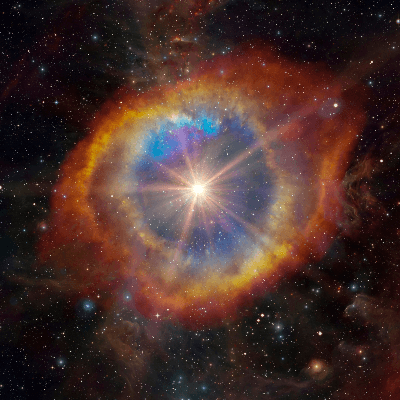
This web page contains hypernova facts for kids and is a great resource for anyone wanting to learn about this massive stellar explosion. We’re going to provide you with the latest and most accurate facts about hypernovas from scientific sources. Alongside hypernova facts, we provide additional resources for further studies on hypernovas.
The hypernova facts below will help you understand what a hypernova is, how power a hypernova can be, how often hypernovas happen and other helpful hypernova facts. We hope the below facts about hypernovas are helpful and make researching asteroids exciting, while opening your mind to these massive stellar explosions.
If any of the below hypernova facts are inaccurate or out of date, please contact us and let us know.
11 Hypernova Facts for Kids
- A hypernova is very luminous and massive stellar explosion that can produce long gamma-ray bursts (GRBs).
- A hypernova is sometimes called a collapsar, which refers to the collapsar model for a hypernova.
- A hypernova is also called a superluminous supernova.
- Bohdan Paczynski of Princeton University first proposed that hypernovas could produce long gamma-ray bursts in 1998.
- A hypernova is conceivable the most power explosive events in our universe, only beaten by the Big Bang.
- A hypernova is believed to release 5 to 100 times more energy than a supernova.
- It’s unknown if all hypernovas produce long gamma-ray bursts. There have been several hypernovas that didn’t have an associated long gamma-ray burst.
- The first gamma-ray burst potentially from a hypernova was detected on July 2nd, 1967, by group of United States Military satellites called Vela. They were designed to detect nuclear weapon tests.
- The first gamma-ray burst to believe to be caused by a hypernova was GRB 970508. It was detected by the Dutch-Italian satellite BeppoSAX in February 1997.
- The first gamma-ray burst to be linked with a supernova was GRB 980425, and it was linked to a type Ic supernova SN 1998bw.
- Some scientist’s hypothesis the Ordovician-Silurian extinction events could have been caused by a gamma-ray burst from a hypernova that was within 6,000 light-years of the planet Earth.
Additional Resources to Research Hypernovas
- Know Your Novas: Star Explosions Explained – An infographic showing the different types of star explosions on the Space.com website.
- Hypernova – Imagine the Universe – Learn about the discovery of remnants of a hypernova explosion on the NASA website.
- Observations of a Rare Hypernova – An excellent article on how observations of a rare hypernova complete the picture of the death of the of massive stars.
- Hypernova – Wikipedia – Learn more about this massive type of stellar explosion on the Wikipedia website.
